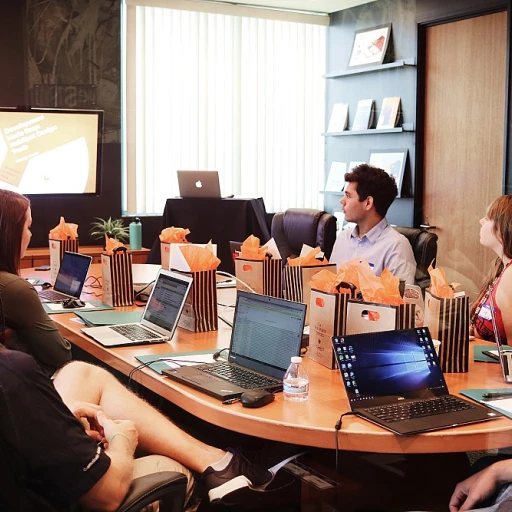
What is a double shift in the workplace
Defining the Double Shift in Today’s Workplaces
In many industries, especially those with fluctuating demand like restaurants, healthcare, and manufacturing, the term "double shift" comes up frequently. But what does it really mean? A double shift refers to an employee working two consecutive shifts in a single day, often resulting in extended work hours that can stretch well beyond the standard eight-hour shift. This practice is common in businesses that operate long hours or require flexible workforce management to meet operational needs.
Double shifts are not the same as split shifts, where an employee’s workday is divided into two separate periods with a significant break in between. Instead, working a double means clocking in for one shift and continuing directly into the next, sometimes with only a short break. For example, a staff member in a busy restaurant might work from morning through late evening to cover both the lunch and dinner rushes. This can lead to long hours and increased labor costs for employers, while also impacting employee scheduling and work life balance.
Double shifts are often used to address unexpected staff shortages, high customer demand, or special events. While they can help businesses stay agile, they also raise important questions about employee well-being, overtime pay, and compliance with labor laws. Effective management of double shifts requires careful scheduling and attention to workforce needs, as extended work can affect both productivity and morale.
For a deeper look at how accurate time tracking and security timesheets can impact compensation and benefits in these scenarios, you may find this article on how security timesheets impact compensation and benefits helpful.
How double shifts impact employee compensation
How working double shifts affects pay and benefits
When employees take on double shifts, the impact on their compensation can be significant. Double shifts typically mean working two consecutive shifts or extended hours in a single day, which is common in industries like restaurants, healthcare, and manufacturing. This practice can lead to increased earnings, but it also brings unique challenges for both staff and management.- Overtime pay: In many regions, labor laws require employers to pay overtime rates when employees work beyond standard work hours. For example, working a double shift often pushes employees past the typical eight-hour shift, triggering overtime pay. This can boost take-home pay, but it also increases labor costs for the business.
- Shift differentials: Some industries offer additional compensation for working late-night or split shifts. Employees who work double shifts that include these hours may be eligible for extra pay, depending on company policy and local regulations.
- Impact on benefits: Extended work hours can affect eligibility for certain benefits, such as meal breaks, rest periods, or even health coverage, depending on the employer’s policies and the total hours worked. Workforce management systems need to track these details carefully to ensure compliance and fairness.
- Work-life balance: While the extra income from double shifts can be appealing, working long hours or consecutive shifts can strain an employee’s work life balance. Fatigue and stress may increase, which can affect overall well-being and job satisfaction.
Legal considerations for double shifts
Key legal frameworks for double shift scheduling
When it comes to double shifts and extended work hours, labor laws play a crucial role in protecting employees. Regulations vary by country and sometimes by state or region, but most labor laws are designed to ensure fair compensation and safe working conditions for staff who work long hours or consecutive shifts.- Overtime pay requirements: In many industries, employees working more than a standard number of hours per day or week—often due to double shifts—are entitled to overtime pay. For example, in the United States, the Fair Labor Standards Act (FLSA) mandates overtime pay at one and a half times the regular rate for hours worked over 40 in a week. This is especially relevant for restaurant staff, healthcare workers, and other sectors with frequent shift schedules.
- Mandatory rest periods: Labor laws often require minimum rest periods between shifts. Scheduling double shifts without adequate breaks can lead to legal violations, impacting both employee well-being and business compliance.
- Split shifts and consecutive shifts: Some jurisdictions have specific rules for split shifts or working double shifts in a single day. These rules may include additional compensation or restrictions on how shifts can be scheduled to prevent excessive fatigue among the workforce.
Risks of non-compliance for employers
Employers must be diligent in workforce management and employee scheduling to avoid legal pitfalls. Failing to comply with labor laws related to double shifts can result in:- Fines and penalties for violating overtime or rest period regulations
- Increased labor costs due to lawsuits or back pay requirements
- Damage to business reputation and employee trust
Benefits and challenges of double shifts for employees
Pros and Cons of Working Double Shifts
Double shifts are common in industries like restaurants, healthcare, and manufacturing, where extended work hours help meet business demands. For employees, working double or consecutive shifts can bring both advantages and challenges. Understanding these can help staff and management make informed decisions about shift schedules and workforce management.
- Increased Earnings: One of the main benefits of working double shifts is the opportunity for higher pay. Employees often receive overtime pay for hours worked beyond the standard workday, which can significantly boost their income, especially in sectors with labor shortages or high demand.
- Flexible Scheduling: Some staff appreciate the ability to work double shifts as it allows them to condense their work hours into fewer days. This can create longer periods off, which may help with work life balance for those who prefer extended time away from work.
- Skill Development: Extended work periods can provide employees with more exposure to different tasks, customers, or situations, especially in fast-paced environments like restaurants or hospitals. This can support professional growth and adaptability.
- Fatigue and Burnout: On the downside, working double or split shifts can lead to physical and mental fatigue. Long hours without adequate rest increase the risk of errors, accidents, and long-term health issues. This is a significant concern in industries where alertness is critical.
- Work Life Balance Challenges: Extended work hours can disrupt personal routines, family time, and social activities. Employees may find it difficult to maintain a healthy balance, especially if double shifts are scheduled frequently or with little notice.
- Impact on Productivity: While extra hours can help meet immediate business needs, overworked staff may experience decreased productivity and engagement over time. Effective management and careful scheduling are essential to avoid negative impacts on both employees and business outcomes.
Employers and employees should weigh these factors when considering double shifts. Transparent communication, fair scheduling practices, and compliance with labor laws are key to ensuring that extended work hours benefit both the workforce and the business as a whole.
Employer responsibilities when scheduling double shifts
Key employer obligations for double shift scheduling
Employers play a crucial role in managing double shifts and ensuring fair treatment for their workforce. When scheduling employees for double shifts, several responsibilities must be addressed to maintain compliance and support staff well-being.- Compliance with labor laws: Employers must adhere to local and national labor laws regarding maximum work hours, overtime pay, and rest periods between shifts. This is especially important in industries like restaurants, healthcare, and manufacturing where double shifts are common.
- Transparent communication: Clear communication about shift schedules, expectations, and any changes is essential. Employees should be informed well in advance if they are required to work double or consecutive shifts.
- Accurate time tracking: Proper workforce management systems should be in place to track work hours, overtime, and split shifts. This helps prevent errors in compensation and ensures compliance with wage and hour regulations.
- Monitoring employee well-being: Extended work hours and working double shifts can impact work life balance and employee health. Employers should monitor staff for signs of fatigue and provide adequate breaks during long shifts.
- Fair compensation: Employees working double shifts are often entitled to overtime pay or additional compensation. Employers must ensure that pay reflects the extra hours and complies with all legal requirements.
- Equitable scheduling practices: Rotating double shifts among staff and considering individual needs can help prevent burnout and promote fairness in the workplace.
Supporting staff during extended work hours
Double shifts can be demanding, especially in fast-paced industries. Employers should provide resources and support to help employees manage the challenges of extended hours. This may include:- Offering meals or rest areas for staff during long shifts
- Allowing flexible scheduling when possible to accommodate personal needs
- Providing training on time management and self-care for employees regularly working double shifts
Best practices for managing double shifts
Effective Strategies for Double Shift Management
Managing double shifts in industries like restaurants, healthcare, and manufacturing requires careful planning and a strong focus on both employee well-being and business needs. Here are some practical approaches to help ensure double shift scheduling is fair, legal, and sustainable:- Transparent Scheduling: Communicate shift schedules well in advance. This gives staff time to plan their work life balance and reduces last-minute stress, especially when working double or consecutive shifts.
- Monitor Work Hours: Track employee hours closely to avoid exceeding legal limits on extended work and overtime. This is crucial for compliance with labor laws and for managing labor costs.
- Rotate Double Shifts: Distribute double shifts fairly among the workforce. Avoid assigning the same employees to extended hours repeatedly, which can lead to burnout and decreased morale.
- Offer Adequate Breaks: Ensure staff working long hours or split shifts receive proper rest periods. This supports health, safety, and productivity.
- Encourage Feedback: Create channels for employees to share concerns about shift schedules or fatigue. Regular feedback helps management adjust practices and address issues early.
- Leverage Workforce Management Tools: Use employee scheduling software to optimize shift coverage, track overtime pay, and prevent scheduling conflicts. This is especially helpful in businesses with complex staffing needs.
- Support Well-being: Recognize the challenges of working double shifts and provide resources such as wellness programs, meals during extended hours, or transportation support after late shifts.
By prioritizing fair scheduling and open communication, businesses can manage double shifts effectively while supporting both operational goals and employee satisfaction. These best practices help maintain a healthy workforce and reduce the risks associated with long or consecutive shifts, ultimately benefiting both staff and the business.












